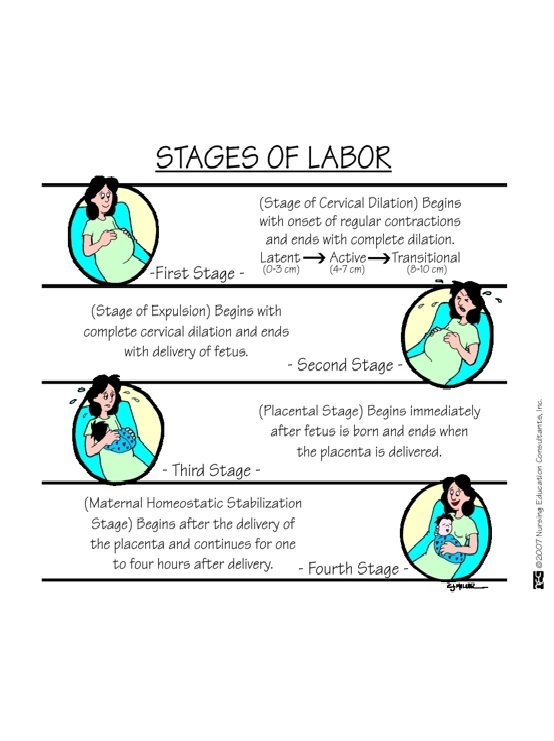The Four Stages of Labor and Delivery – Understanding the Process from Early Labor to Recovery
First Stage of Labor:
The first stage of labor is typically the longest stage and is divided into three parts:
-
Early labor:
During this phase, your cervix begins to thin out (efface) and open up (dilate), usually up to 3 cm. Contractions may start and become longer and stronger, but are still irregular and may be up to 20 minutes apart. This phase can last several hours or even days.
-
Active labor:
This phase begins when your cervix is around 4 cm dilated and contractions become more regular and intense. This is when it’s time to head to the hospital or birthing center. This phase usually lasts a few hours.
-
Transition to second stage:
This is the shortest, but most intense part of the first stage of labor. Your cervix is fully dilated (10 cm) and contractions may be very strong and close together. This phase may only last a few minutes or up to an hour.
Second Stage of Labor:
During the second stage of labor, your baby moves through the birth canal and is born. This stage usually lasts from a few minutes to a couple of hours. You will feel the urge to push and your healthcare provider will guide you through the pushing process. When your baby’s head starts to emerge, the provider may ask you to stop pushing briefly to allow for the perineum to stretch and prevent tearing. Once your baby is born, you may have immediate skin-to-skin contact and begin breastfeeding.
Third Stage of Labor:
The third stage of labor is the delivery of the placenta or “afterbirth.” This stage usually lasts a few minutes and is relatively easy compared to the previous stages. You will have some mild contractions and your healthcare provider will guide you in pushing out the placenta.
Fourth Stage of Labor:
The fourth stage of labor is the recovery period. This stage lasts from about 30 minutes to a few hours after delivery. During this time, you will be monitored for any signs of bleeding, and your healthcare provider will check your uterus to make sure it is contracting and returning to its pre-pregnancy size. You may also breastfeed your baby during this time.

Leave a Reply